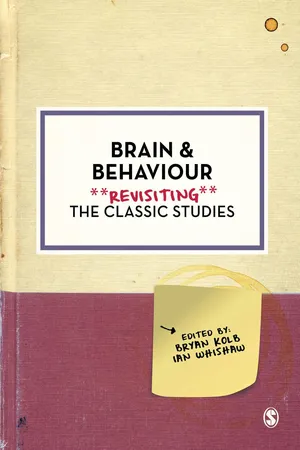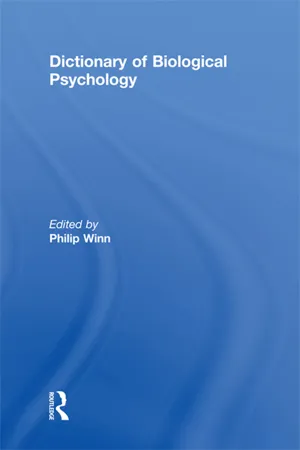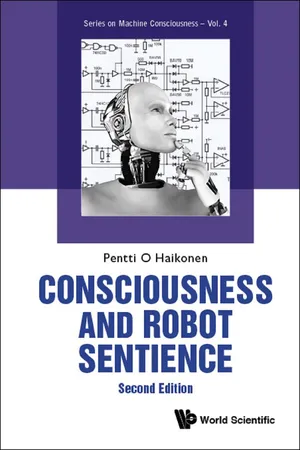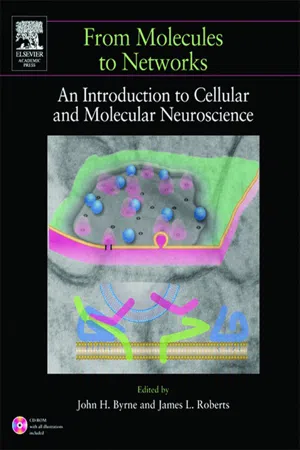Psychology
Hebbs Theory
Hebb's Theory, proposed by psychologist Donald Hebb, suggests that when two neurons are repeatedly activated together, the connection between them strengthens. This concept, known as "Hebbian learning," forms the basis for understanding how neural networks in the brain develop and adapt through experience. Essentially, Hebb's Theory emphasizes the role of synaptic plasticity in shaping learning and memory processes.
Written by Perlego with AI-assistance
Related key terms
5 Key excerpts on "Hebbs Theory"
- eBook - ePub
Brain and Behaviour
Revisiting the Classic Studies
- Bryan Kolb, Ian Whishaw, Bryan Kolb, Ian Whishaw(Authors)
- 2016(Publication Date)
- SAGE Publications Ltd(Publisher)
The Organization of Behavior to be the most important contribution to psychological theory in recent years.” In a lengthy review, Leeper (1950) stated that “There are so many respects in which Hebb’s book is so high in quality and is so delightfully written that it will have an assured status in psychology.”Figure 7.5 Hebb’s illustration of the concepts of synaptic plasticity and the formation of a cell assembly. (a) A hypothetical group of neurons in Area 17 and 18 of the visual cortex, illustrating Hebb’s concept of how repeated stimuli in the visual receptive field area corresponding to the shaded area may lead to a recurrence of firing patterns between these neurons, with the consequence that the connections AC and CB are strengthened. (b) Illustration of another hypothetical situation in which A, B and C are neurons in visual Area 18, and are all strongly activated by a particular stimulus. The remaining neurons D, E and X form direct or indirect connections with the initial three neurons. Hebb proposed that the appropriate stimuli would result in strengthening of numerous connections including AE, BC, BD, eventually resulting in an increase in the probability of coordinated activity among the various neuronal pairs. (c) Identification of synaptically coupled neurons using monosynaptically restricted transsynaptic tracing with a deletion-mutant rabies virus. The mutant virus lacks a gene encoding a glycoprotein essential to the viruses’ ability to infect synaptically coupled neurons. Additionally, infection of a neuron with the mutant rabies virus requires expression in the target neuron of a specific receptor protein not normally present in mammalian neurons. In an initial step, a subpopulation of cortical neurons were transfected with genes encoding: first, the viral receptor protein, thus allowing infection with the modified rabies virus; second, the normal rabies virus glycoprotein that allows the virus to infect neurons presynaptically connected to the infected cell; and third, dsRed for identification. The mutant virus expresses green fluorescent protein (GFP), thus neurons presynaptic to the initially infected neurons appear green. Initially infected neurons express both dsRed and GFP, and appear yellow. (d and e) dsRed expression alone and transsynaptically labelled neurons expressing GFP around the neuron identified at the end of the dashed white line in (c). Scale bars 200 mm. (Source - eBook - ePub
- Philip Winn, Philip Winn(Authors)
- 2003(Publication Date)
- Routledge(Publisher)
Science 237:42–48.- Brown T.H. & Chatterji, S. (1994) Hebbian synaptic plasticity: evolution of the contemporary concept. In Models of Neural Networks , vol. 2, ed. E. Domany, J.L.Van Hemmen & K.Schulten, pp. 287–314, Springer-Verlag: New York.
- Hebb D.O. (1949) The Organization of behavior , Wiley: New York.
- Magee J.C. & Johnston D. (1997) A synaptically controlled, associative signal for Hebbian plasticity in hippocampal neurons. Science 275:209–213.
T.V.P. BlissPassage contains an image
Hebephrenia
DOI: 10.4324/9780203298848-2017(from Greek, hebe: youth, phren: mind) An early-onset disorder that formed a category within DEMENTIA PRAECOX, a description used by Emil Kraepelin (1856–1926) but which was later replaced by the term SCHIZOPHRENIA. Hebephrenia included disorders of AFFECT, MOOD and thought. Other categories in dementia praecox included PARANOIA and CATATONIA. These terms remain in use: hebephrenia is a term rarely used now.Passage contains an image
Hedgehog proteins
DOI: 10.4324/9780203298848-2018Hedgehog proteins (hh proteins), coded by hedgehog genes, are important during DEVELOPMENT: they are important in many different structures, not just within the CENTRAL NERVOUS SYSTEM, and are found in species from DROSOPHILA through rodents to humans. Their function appears to be to induce the formation of locally appropriate CELL types and to guide their develop ment. For example, the DOPAMINERGIC neurons of the SUBSTANTIA NIGRA are stimulated to develop by a particular member of this family of proteins, SONIC HEDGEHOG protein (shh). There is a belief that use of hedgehog proteins might prove valuable in restructuring brains that have been damaged.See also: neurodevelopment ; transplantationPassage contains an image
Hemangioblastoma
DOI: 10.4324/9780203298848-2019see tumourPassage contains an image
Heme
DOI: 10.4324/9780203298848-2020Heme is important in several cellular processes, including GENE expression and the transport of PROTEINS: it is present in every type of CELL. Heme is converted by HEME OXYGENASE to CARBON MONOXIDE and biliverdin (a bile pigment). - eBook - ePub
- Pentti O Haikonen(Author)
- 2019(Publication Date)
- WSPC(Publisher)
Hebb’s Rule [Hebb 1949].Hebb’s model explains simple associative learning, where the simultaneous activation of certain neurons leads to the strengthening of the synaptic connections between these. In this way the firings of these neurons will become associated with each other. Later on the firing of some neurons will lead to the firing of the other neurons, too, due to the learned synaptic connection, and in this way the original neural activity pattern is recreated in the group of neurons.Hebbian learning can be seen as a simple neurological mechanism for Pavlovian conditioning in the context of two or more neurons. Hebbian learning can also be unsupervised and very fast. The principle of Hebbian learning can also be mathematically formulated in different ways. Various Hebbian learning algorithms for the determination of synaptic connection weights in artificial neural networks exist [see e.g. Jain et al. 1996]. Hebbian learning algorithms are usually simple and do not necessarily involve the adjustments of synaptic weights against each other.Hebbian learning is not very suitable for traditional multilayer neural networks, but it can be easily used in single artificial neurons and synapses, if these are designed to be associative in the first place.11.3.Associative Neurons and Synapses
11.3.1.The Haikonen Associative Neuron
Associative information processing connects signal patterns with each other, and evokes them by each other. This calls for a neural connecting unit, an associative neuron. This neuron would be able to recognize signal patterns and connect these associatively with other signals.The author has devised an associative neuron (Haikonen associative neuron) along these requirements. This neuron utilizes modified Hebbian learning and implements the function of connection that is missing in Perceptrons and the like. While the basic and actually only function of Perceptron is the learning of a pattern, the Haikonen neuron can do more; it can learn a pattern and its association with a signal, and evoke that signal with the presence of the learned pattern. This associative function also enables the grounding of meaning, if the used signals and signal patterns represent sub-symbolic self-explanatory features. Also, the associative function of this neuron allows the seamless transition from sub-symbolic to symbolic processing, including the use of a natural language with grounded meanings. - eBook - ePub
From Molecules to Networks
An Introduction to Cellular and Molecular Neuroscience
- John H. Byrne, Ruth Heidelberger, M. Neal Waxham, James L. Roberts(Authors)
- 2003(Publication Date)
- Academic Press(Publisher)
conditions that cause synapses to change. His thinking proved to be influential and informed later experiments that probed the mechanisms behind LTP. According to Hebb’s now-famous postulate:When an axon of cell A is near enough to excite a cell B and repeatedly or persistently takes part in firing it, some growth process or metabolic change takes place in one or both cells such that A’s efficiency, as one of the cells firing B, is increased. (Hebb, 1949, p. 62 )In short, coincident activity in two synaptically coupled neurons would cause increases in the synaptic strength between them. Hebb’s postulate could be thought of as the synthesis of William James’ (1890) “law of neural habit” and Eugenio Tanzi’s (1893) synaptic hypothesis for memory (Brown et al., 1990). Note that when Hebb published his thoughts the synaptic hypothesis for learning and memory had been discussed for several decades already (Cajal, 1911 ; Konorski, 1948 ; Tanzi, 1893 ; Woodworth, 1921 ; Zeigler, 1900 ). There are also numerous contemporary interpretations of Hebb’s postulate, most of which can be captured by the mnemonic Cells that fire together, wire together, a concept that also applies to developmental changes in neural connectivity.Could the classic properties of LTP all be consequences of synapses that obey a Hebbian rule? A definitive test of this hypothesis was performed by Brown and co-workers (Kelso et al., 1986). If the synapses were hebbian, then it should be possible to induce LTP under experimental conditions in which direct depolarization of the postsynaptic neuron via the recording microelectrode substitutes for the usual S input (see Fig. 18.9 ). In contrast, if the synapses were nonhebbian, and the critical role of the S input were instead to release an “LTP factor,” as some had suggested (Goddard, 1982 ; Hopkins and Johnston, 1984 ), then pairing presynaptic stimulation of a W input with direct depolarization of the postsynaptic cell should fail to induce LTP.FIGURE 18.9 - William B. Levy, James A. Anderson, Stephen Lehmkuhle(Authors)
- 2014(Publication Date)
- Psychology Press(Publisher)
Virtually all neuroscientists are convinced that precisely specified changes in synaptic coupling store memory. The chapters elsewhere in this volume give numerous examples of physiological evidence supporting this belief. In general, it is impossible to form new neurons after birth, at least in mammals. Large changes in dendritic branching and formation of new synapses are possible in immature organisms, but are unlikely in adults. Therefore changes in strength of preexisting synapses are the most likely candidate for learning in adults. My favorite candidate for the modifiable structure in adult mammalian neocortex is the dendritic spine. These structures seem to respond to experience in some degree and have electrical properties as well as anatomies that seem highly suitable for modification.In any case, detailed changes in the coupling between cells seems to be the mechanism. The most common departure point for further development seems to be the suggestion made by Donald Hebb in 1949. Hebb’s suggestion was stated as follows:When an axon of cell A is near enough to excite a cell B and repeatedly or persistently takes part in firing it, some growth process or metabolic changes take place in one or both cells such that A’s efficiency as one of the cells firing B, is increased [p. 62].This suggestion predicts that cells will tend to become correlated in their discharges, and this kind of synapse is sometimes called a correlational synapse.Several of the chapters in this volume (Levy, Singer, Cooper) review the evidence for modification equations that are similar to those suggested by Hebb. Obviously, the details are of immense importance and interest. Clearly, also, we now have some physiological evidence that such systems exist in mammalian cortex.The approach taken here is to derive some very straightforward conclusions that arise if we simply assume that a very simple Hebbian scheme exists. We also briefly describe some simple simulations showing how robust these systems can be, and how resistant they are to damage and to parametric variations.Let us assume in general that synaptic change is related to the magnitude of both pre- and postsynaptic activity. Then we can immediately show that the system can act as a general purpose associator. As suggested by Hebb, correlational synaptic modification leads to associative structures. Because we know that human cognition is very strongly associative, this is a remarkably interesting result.
Index pages curate the most relevant extracts from our library of academic textbooks. They’ve been created using an in-house natural language model (NLM), each adding context and meaning to key research topics.




